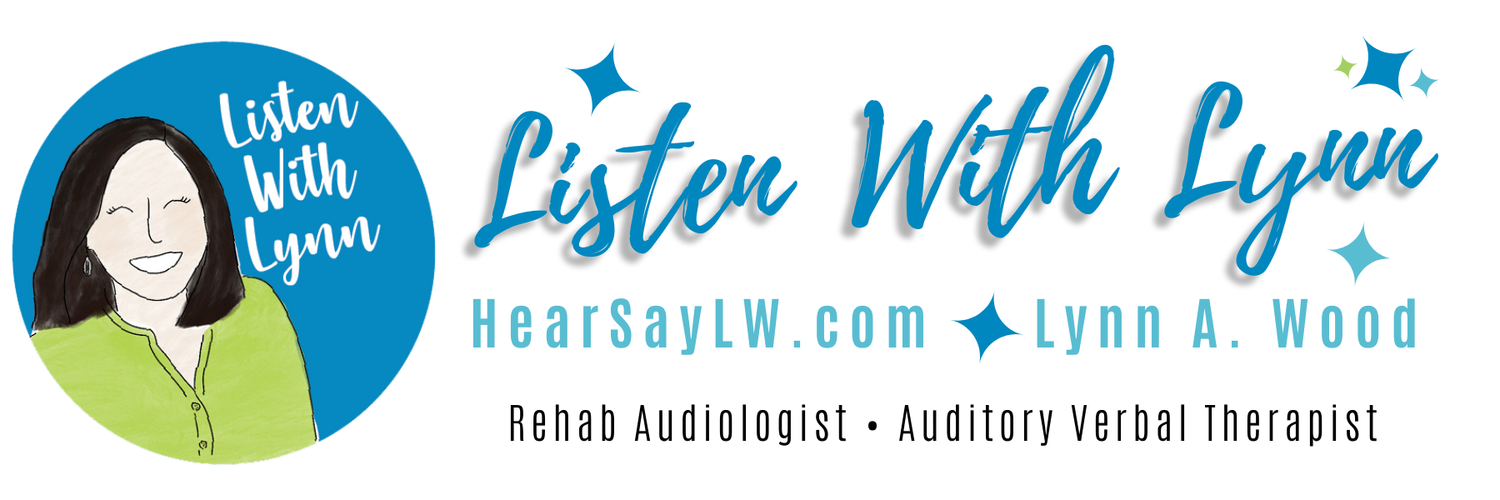The 5 W’s - What, Who, Where, When and Why of Experience Books
What?
Experience Books are an important tool for young children who are deaf and hard of hearing learning spoken language through listening. Experience Books are handmade books about everyday happenings. To a child, an Experience Book is a “Book about Me” made by their parents. To adults, it is a powerful brain-building opportunity for growing a child’s listening and spoken language learning.
Experience Books have a long history in auditory verbal therapy. They were introduced by auditory verbal pioneer Helen H. Beebe in the 1950s. “Beebe” as she was called by the children is renowned to have begun every therapy session by asking, “Where’s your book?” and families ought not to show up empty handed. Beebe received an update and glimpse into the child and their family’s life and needs while talking together about the latest pictures. Experience Books serve this same role and purpose today. They are valuable when coaching parents and caregivers with Listening and Spoken Language LSL Strategies and Techniques in intervention sessions.
Who?
When parents and caregivers first learn about Experience Books most simply reply, “I can’t draw.” But with guidance and coaching, they do and quickly realize Experience Books are not dependent on artistic abilities. The book contains simple drawings where each family member is identified by a specific color stick figure. One creative mom took headshot photos of each family member and made copies. Her son’s book contained stick people with photo faces. Experience Books are similar to scrapbooks enhanced with stickers, mementos, and sometimes photos. A simple drawing serves as a talk-about reminder to elicit language and listening fun with a young child. They are only a tool to stimulate language learning therefore should not be time-consuming or labor-intensive.
Where?
Opportunities for daily entries in a child’s Experience Book are everywhere. Day in and day out. A spill at dinner, finding a spider in a web, feeding the dog, a virtual call with grandma, a scratch requiring a band-aid all present brain-building language learning opportunities. Daily routines are important. Brushing teeth, matching pairs of socks, washing a window, picking flowers, raking the leaves or running errands. The mundane is worthwhile to talk about and to fill the pages.
When?
A daily entry is the goal but individualized by each family. Scheduling a regular time for the parent to make entries such as after the child is in bed and a specific time each day to talk about the picture with the child such as at breakfast is important. For older listeners, sitting shoulder to shoulder with the adult while drawing the picture and talking together can be a rich language-learning time.
Why?
Experience Books build brains, grow language and are memory makers. While Experience Books can be created with a variety of apps and on websites handcrafted books are often dog-eared and over time taped together. They are well used, well-loved and this is how we know they are fulfilling their purpose. Just like families who visited the Helen Beebe Speech and Hearing Center in Pennsylvania heard, “Where's your book?” consider doing the same. The important thing is to get started!
Tips Creating An Experience Book
"A picture is worth a thousand words" is an old adage meaning that multiple ideas can be conveyed by a
single image. So keep the drawings simple and add keepsakes or photos occasionally to make the book come alive. An entry in an Experience Book serves as a reminder and a tool to grow meaningful listening and talking opportunities
Promote meaningful listening and talking opportunities with Experience Books by:
Talking about the entry before pointing to the pictures. Listen first!
Describing the pictures with a play-by-play of the experience.
Talking about what the child is thinking and their feelings.
Using serve and return conversation turn-taking between you and the child.
Encouraging responses from the child with an expectant look, leaning in, pausing and wait time.
Expanding on the child’s comments with more complex language and talking about related experiences.
Using open-ended questions rather than those that have only a yes or no reply.
Printable Experience Book Covers
Choose one of the Experience Book covers provided or create one of your own to personalize your child's story. Depending on the child's age, talk together about all 20 options while making a decision. Discuss their interests and why a cover would be a good match and why not. Lead a thinking conversation and match each cover to a child they know. Example: My friend, Jacob is an expert on dinosaurs. He would love the green cover with T-Rex dinosaurs. The cover encourages ownership of their book and story. Well-loved Experience Books are full of entries and stories to tell to family and friends.




